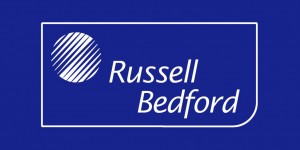This article by Tony A. Rose first appeared in the Fall 2014 issue of Business World magazine, a publication by Russell Bedford International.
International.
We all have elephants – problems, needs or truths that we ignore even though we must face up to them. Often our elephants may be of a professional nature. We may also have personal elephants. In Say Hello to the Elephants I offer a way to confront issues, along with tools to address problems, achieve clarity, and make decisions. I call this Quadrant Thinking. In this, the second of four articles, I present an overview of Quadrant Two: Solutions.
Solutions
In Quadrant One we looked at reaching clarity and how that makes everyday problems manageable. Having achieved clarity and defined your goals you know where you want to go. In Quadrant Two we will look at how you get there: your solutions.
Above all, your solutions must be SMART:
• Specific
• Measurable
• Actionable
• Relevant
• Time-bound
Obstacles are stepping stones that narrow the solution
When people talk about goals they cannot achieve, they usually name a list of obstacles.
By changing your perspective you will begin to see that most obstacles are milestones that represent achievement. If you plan to eliminate obstacles you move one step closer to your goal. In this context, obstacles are not barriers but welcome milestones.
Sausage is subjective
You cannot make a blanket statement such as, ‘I love sausage’. Sausages come in all flavours; depending on individual taste nobody can unequivocally love sausage. This is also true of solutions. Your solutions must suit your tastes. What tastes good to another may not taste good to you.
When you consider solutions to complicated problems with your advisers, be sure to question the solutions and ensure they are the right fit for you. If you understand a solution you will be able to answer these questions:
• What is it?
• How is it applicable?
• Why does it work?
• What can go wrong?
• Who must be involved?
• How much does it cost to implement?
• How much does it cost to sustain?
• What must be done to sustain it?
And make sure your advisers offer multiple solutions because sausage is subjective.
The artichoke theory
When you work towards achieving a certain goal, remember to keep it simple. You should always break the steps down into small, achievable milestones.
The smaller the steps the simpler things get, and the more likely you are to achieve a favourable outcome. I call this the Artichoke Theory. In other words, you should eat an elephant the same way you eat an artichoke: one leaf at a time.
Stop and ask yourself Is what I am doing right now directly related to reaching my main goal? The answer will always be yes if you keep things simple. If the answer is no, you are making things difficult for yourself.
Slow down. You are in a hurry
Once you achieve clarity you will feel a surge of energy to accomplish your goals. But when something is important, you must slow down, focus on the solutions, or risk making rash decisions. Take a deep breath and stay calm. Only then will you have the wherewithal to address obstacles, make rational decisions, and move your plans forward.
The law of unintended consequences
All conduct has unintended consequences. The unintended consequences of negative behaviour are inevitably negative but positive behaviour brings positive unintended consequences.
With clarity, your unintended consequences become strategic by-products of your planned conduct. Strategic by-products are always positive because your planning, the purposefulness of your goals, and the alignment of your goals with your values all create a solid base to which positive things can attach.
Choosing the right trusted advisory team
Regardless of your skills, one thing is certain: you are too close to your own situation to evaluate objectively your whole picture. Finding the right team of advisers will help you define your clarity and solutions.
The ideal adviser is trustworthy, competent, reliable, and team-oriented but these commodities are rare in the real world.
Trust comes in many forms. Fortunately, David Maister, Charles Green, and Robert Galford – authors of The Trusted Adviser – designed a formula to help evaluate and rate a trusted adviser.
Based on a one-to-ten scale, a trusted adviser’s rating is the sum of competence + reliability + intimacy divided by self-orientation. The higher the number the more intensely you will trust your adviser.
Being in control of the process
If you give someone else control they will take control. Although you might rely on various advisers you must sit at the head of the table and raise your hand when you disagree or do not understand.
It is your story, your family, your business, and your goals. When you are clear about where you are going, no-one else can conduct your affairs better than you. No adviser can take that power unless you surrender it. You may not be an expert in your advisers’ areas but you are the expert in the most important area: you.
Managing by gut
Many successful businesses not only employ a team of consultants to help them find the right solutions, they also use specific tools. One such tool is the Kolbe A Index.
Kathy Kolbe developed the Kolbe Wisdom in the 1980s. She understood that many instruments measured intellect (IQ) and the affective mind (personality) but could not find one that measured how people behave when free to be themselves (conative mind).
Most tools try to define what people are not good at and encourage them to do better. Kolbe tells people to concentrate on what they are good at and leverage those strengths.



